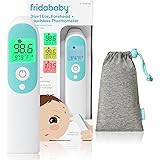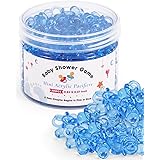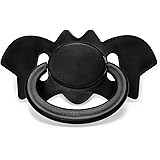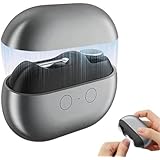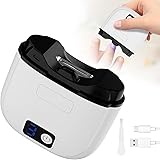Are you navigating the exciting yet often overwhelming world of introducing solids to your little one? As the video above may highlight, selecting the perfect baby feeding spoon is more crucial than you might initially think. This small tool plays a significant role in your baby’s early feeding experiences.
Choosing the right spoon ensures mealtime is safe and comfortable. Furthermore, it can help foster a positive relationship with food. This guide delves deeper into what makes an ideal baby feeding spoon.
Understanding the Importance of a Quality Baby Feeding Spoon
A baby’s first spoon introduces new textures and sensations. Therefore, it must be gentle and safe. A poorly designed spoon can cause discomfort. It might even deter your baby from eating effectively. Consequently, thoughtful selection is paramount.
The right spoon protects tender gums and developing teeth. Moreover, it encourages proper oral motor development. It makes the transition to solid foods smoother. This supports happy and healthy eating habits.
Key Features to Consider in Your Baby Feeding Spoon
When selecting a baby feeding spoon, several features deserve attention. These aspects contribute to both safety and efficacy. Understanding these points helps you make an informed decision.
Material Matters: Silicone, Plastic, or Stainless Steel?
Spoons come in various materials, each with unique benefits. Silicone spoons offer extreme softness. They are very gentle on delicate gums. Additionally, they are highly flexible and durable.
Food-grade plastic spoons are also common. Always ensure they are BPA-free and free from other harmful chemicals. These spoons are often lightweight and colorful. Stainless steel spoons are robust and long-lasting. However, they may feel harder on a baby’s gums. Many parents prefer silicone or soft-tipped plastic for initial feeding.
Soft Tips for Gentle Gums
Babies typically start solids around six months. Their gums are still very sensitive. A spoon with a soft, rounded tip is essential. This design prevents irritation or injury. Soft-tipped spoons make feeding a more pleasant experience.
Look for spoons specifically designed for infants. These often feature flexible silicone or soft plastic. They adapt to your baby’s mouth contours. This enhances comfort during every bite.
Ergonomic Design for Parents and Babies
The spoon’s handle matters for the feeder. An ergonomic handle provides a comfortable grip. This reduces hand fatigue during mealtime. Many brands offer angled handles. These are ideal for reaching food in jars.
As babies grow, they want to self-feed. Spoons designed for little hands are beneficial. These often have shorter, chunky handles. They promote independent eating skills. This aids in their developmental progress.
Optimal Size and Depth of the Spoon Bowl
A baby’s mouth is small. Consequently, the spoon’s bowl must be appropriately sized. A shallow bowl is easier for babies to manage. It helps prevent overfilling. This reduces choking hazards.
A shallow bowl also facilitates easier food removal. Babies learn to clear the spoon efficiently. This promotes good feeding techniques. Avoid spoons with deep bowls for young infants.
Prioritizing Safety: BPA-Free and Food-Grade Materials
Safety is non-negotiable for baby products. Always check for certifications like “BPA-free.” Ensure the materials are food-grade. This guarantees no harmful chemicals leach into food. These standards protect your baby’s health.
Reliable manufacturers adhere to strict safety guidelines. They prioritize non-toxic components. Always purchase from reputable sources. This gives you peace of mind.
Different Types of Baby Feeding Spoons for Each Stage
Babies develop rapidly. Their feeding needs evolve. Different spoon types cater to these changes. Understanding these stages is very helpful.
First Stage: Purees and Introducing Solids
For initial feeding, focus on small, soft-tipped spoons. These are perfect for pureed foods. Their design is gentle on new gums. They help babies get accustomed to the spoon.
These spoons are usually longer. This allows parents to reach comfortably. They also feature bright colors. This can make mealtime more engaging for infants.
Self-Feeding Spoons: Encouraging Independence
Around 9-12 months, babies show interest in self-feeding. Self-feeding spoons are designed for this. They often have shorter, chunkier handles. This is easier for small hands to grasp.
These spoons may feature a slight curve. This assists in scooping food. A soft-tipped design remains crucial. It prevents injury during enthusiastic self-feeding attempts. This fosters autonomy.
Heat-Sensitive Spoons: A Safety Feature
Some innovative spoons offer a heat-sensitive feature. The spoon changes color if food is too hot. This provides an extra layer of safety. It prevents accidental burns. This can be especially useful for new parents.
This technology is invaluable for quick temperature checks. It gives parents confidence. They know the food is safe for consumption. This makes meal preparation less stressful.
Beyond the Spoon: Creating a Positive Mealtime Environment
While the baby feeding spoon is important, the overall environment matters greatly. A calm and happy atmosphere aids digestion. It also makes feeding a joyful experience.
Sit with your baby at meal times. Maintain eye contact. Talk to them gently. This creates a bonding opportunity. It associates food with positive interactions.
Patience and Persistence are Key
Introducing solids can be messy. Babies might refuse new foods. They often experiment with textures. Patience is therefore essential. Do not force-feed your child.
Offer new foods multiple times. It can take many tries for acceptance. Celebrate small victories. This builds a healthy relationship with food. It minimizes mealtime stress.
Addressing the Messiness: Embrace It!
Expect messes when feeding a baby. Food will get on faces, clothes, and the floor. This is a normal part of exploration. It is how babies learn about food.
Use bibs with catch-all pockets. Place a mat under the high chair. Simplify cleanup with damp cloths. Embrace the mess as part of their learning journey. This makes feeding less daunting.
Maintaining and Cleaning Your Baby Feeding Spoons
Proper hygiene for baby feeding spoons is vital. Cleanliness prevents germ buildup. It keeps your baby safe from illness. Follow manufacturer guidelines for best results.
Many spoons are dishwasher safe. This simplifies the cleaning process. Always check product labels first. Hand washing with warm soapy water is also effective. Ensure thorough rinsing.
Store spoons in a clean, dry place. Consider a dedicated container. This prevents contamination. Regular inspection for wear and tear is also important. Replace damaged spoons promptly.
Selecting the ideal baby feeding spoon is a thoughtful process. It directly impacts your baby’s health and happiness. By considering materials, design, and developmental stages, you can choose wisely. For specific product reviews and recommendations, be sure to watch the accompanying video.


